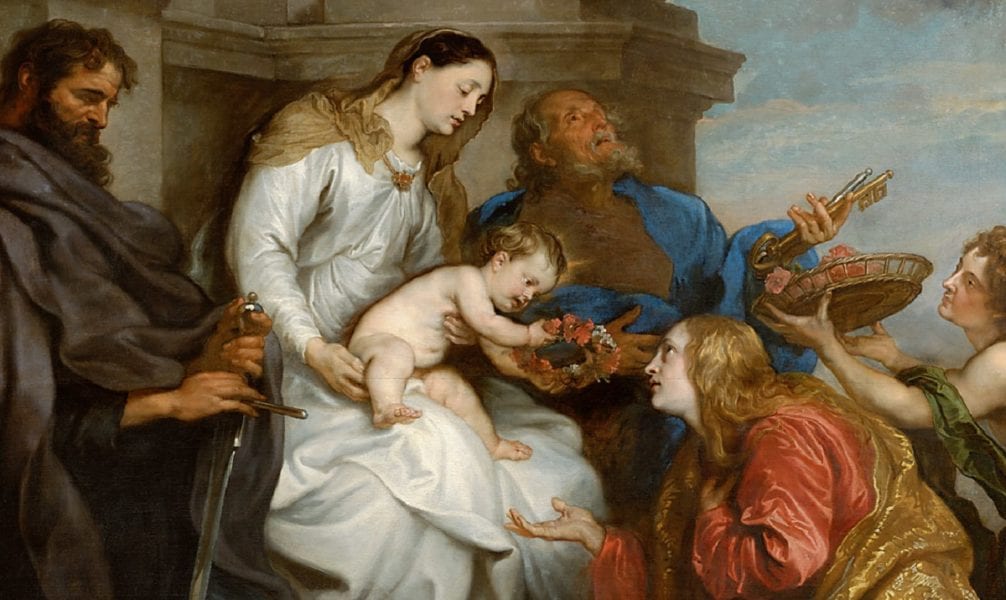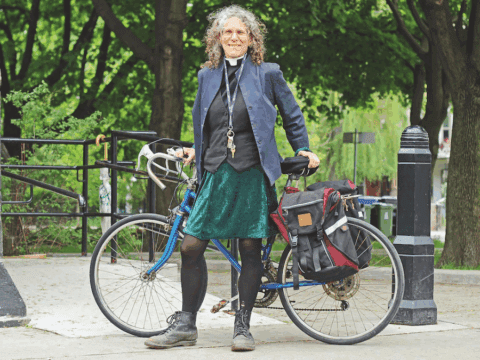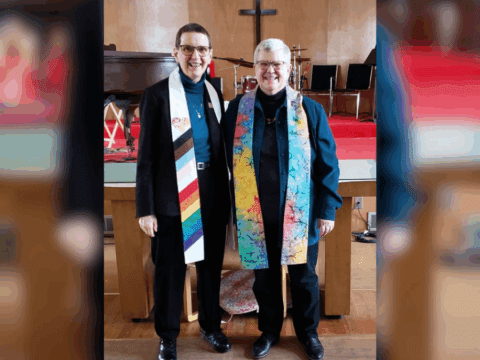In late 1623, 47-year-old Geronima Lo Gatto was laying deathly ill in a hospital near Palermo, Sicily, when a strange young woman entered her room. Geronima, thinking she must be a nurse, asked for some water, but as the young woman approached her bed, her thirst was suddenly sated.
Geronima recognized her visitor as Saint Rosalia, a 12th-century noblewoman-turned-hermit. Rosalia had once been a popular local saint, but over 500 years her story had been forgotten by everyone except the most devout. Rosalia’s bones were still said to lie in a cave on Mount Pellegrino, where she had spent the last years of her life contemplating the divine.
You may unsubscribe from any of our newsletters at any time.
When the saintly apparition reached Geronima’s bedside, she told her not to be afraid. She promised that the sick woman would soon be well, and once recovered, she must make a pilgrimage to Mount Pellegrino. Geronima vowed to do just that, and two days later she made a miraculous recovery. The next spring, she and two of her friends trekked up the mountain and experienced yet another visitation by Rosalia. She asked them to inform the bishop of Palermo that her moment had nearly arrived and it was urgent that her remains be found.
Rosalia, who is also affectionately known as la Santuzza (the little saint), had been born in Palermo in 1130. Her father was the Duke Sinibaldo and her mother was a noblewoman named Maria Viscarda; both were related to the Norman family that was then ruling Sicily. Rosalia didn’t show any early leanings towards religious life. It wasn’t until her wedding day, when she apparently looked in her mirror and saw a vision of Jesus Christ covered in blood, that she decided to commit herself to the church.
More on Broadview: Groundbreaking trilogy finds Zoroastrian ties in religions
Instead of joining a convent, Rosalia retreated into a nearby cave with only a cross and a chaplet (a predecessor of the Holy Rosary). Although Rosalia desired a quiet life of devotion, the story of her vision and subsequent holy isolation spread throughout Sicily. Her grotto soon became a popular destination for those looking for advice on religious matters or wanting to request her prayers on their behalf.
Although she was said to have been subject to many temptations — handsome young men or visions of families in trouble — she remained in chaste solitude in her mountain home until her death in the late 1160s. Her body was found by pilgrims, who said she was reclined as if in sleep, clutching her cross to her chest. She had already been famous for her sanctity during her lifetime; after her death, she began to be venerated in earnest and was officially canonized as a saint. Her intercessions were requested by people as powerful as Empress Constanza I, wife to the Holy Roman Emperor, and a church was built in her honour.

But as time passed, Saint Rosalia’s story was told less and less. The location of her cave on Mount Pellegrino, once such a popular destination, was forgotten. Even a prophecy from St. Benedict the Moor, a 16th-century Sicilian mystic, that Rosalia’s relics would someday be necessary to stop a great plague didn’t do much to revive interest in her. Those who remembered his predictions, though, must have felt a chill when, in 1624, they heard Geronima repeat what Saint Rosalia had said on the mountain: her time had come. And, indeed, shortly after Geronima returned from her pilgrimage, Palermo was gripped by a deadly epidemic.
At first, Cardinal-Archbishop Giannettino Doria tried invoking the four patron saints of Palermo (Christina, Alfa, Ninfa and Agatha) against the plague, but still the plague raged through the city. As the weeks went by and the death toll continued to climb, people began to grow desperate.
Eventually, more than a month after Geronima had told him of her vision, Doria agreed to try searching for Rosalia’s remains and sent a search party up Mount Pellegrino. On July 15, a date now celebrated as Rosalia’s feast day, her cave was found. It’s said that as soon as her relics were brought to Palermo and transferred to the archiepiscopal palace, the epidemic immediately ceased.
After an intense examination by doctors and theologians, Rosalia’s relics were declared authentic. Meanwhile, more stories of apparitions came out, including one from a hunter who had climbed Mount Pellegrino with the intention of throwing himself off a cliff only to have Rosalia intervene. Her relics were carried through the streets of the town in a great procession, and a sanctuary was built around her mountain cave. The half-forgotten hermit had become the saviour of the city.
La Santuzza has been the patron saint of Palermo ever since, and in the days of COVID-19, her popularity has only increased. Even if some of the details of her story might challenge the credulity of a modern audience — prophecies, apparitions and plague-ending miracles — her story is a reminder that what we’re enduring now has happened before and the bad times will eventually come to an end.
Someday we’ll be able to have processions and public celebrations again. Until then, we can try to channel Rosalia’s shelter-in-place energy and not let ourselves be tempted into coming out until the worst of the danger has passed.
Broadview is an award-winning progressive Christian magazine, featuring stories about spirituality, justice and ethical living. For more of our content, subscribe to the magazine today.















